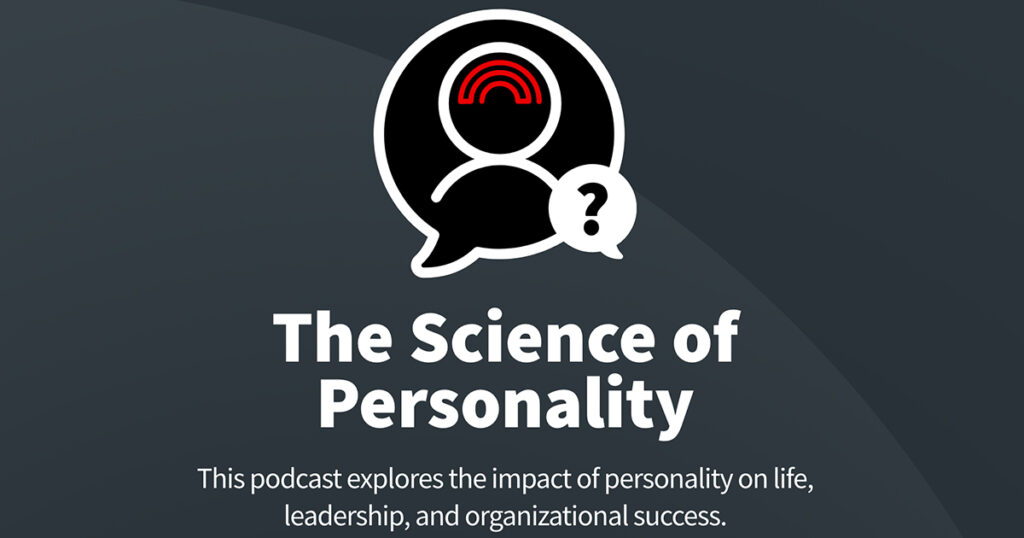
In terms of personality, elite athletes are a competitive, hardworking, organized, goal-driven, motivated group of individuals. Would you expect them to be people pleasers too?
On The Science of Personality, cohosts Ryne Sherman, PhD, chief science officer, and Blake Loepp, PR manager, recently discussed what personality characteristics translate to success for elite athletes.
Hogan Assessments has collected personality data from a unique sample set: the draft classes of 2021 and 2022 for the National Football League (NFL)—approximately 600 athletes performing at the 99.9th percentile.
Let’s dive into what data tell us about the personality of elite athletes.
A Deep Dive into the Data
Given that the NFL draft prospects are proven team players, you might expect to see that they have specific personality characteristics in common. But the data could surprise you.
Hogan Personality Inventory
The Hogan Personality Inventory (HPI) measures the bright side of personality, how we present ourselves at our best. The elite athletes scored 74% on Adjustment, on average, which means they likely show resilience to stress and failure. Professional athletes have their every move scrutinized and criticized by hundreds of thousands of people, and they overcome failure repeatedly to achieve their incredibly high level of performance. “Being able to handle that pressure and rise to the occasion is really important,” Ryne pointed out.
A drawback to high Adjustment can be overconfidence. In the United States, football players are often celebrated and even glorified in high school, college, and their professional careers. This can make it easy for them to believe they don’t need any feedback. (Listen to our conversation with Gillian Hyde in episode 17 to hear more about downsides of high Adjustment.)
Hogan Development Survey
The Hogan Development Survey (HDS) measures the dark side of personality, or derailing behaviors that may manifest under stress and pressure. There were a few remarkably elevated scores, specifically on the Reserved, Bold, Diligent, and Dutiful scales.
- Reserved (84%) - High Reserved scores show that these elite athletes likely see themselves as individualistic, tough minded, and distant. They’re less focused on group participation and more focused on individual accomplishment.
- Bold (84%) - A high score on the Bold scale indicates confidence. This is not unfounded, considering that these athletes are performing at the very top of their profession. Another factor affecting the Bold score is age. Ryne pointed out that Bold tends to be higher when younger and lower when older. The athletes who completed the personality tests were in their very early twenties.
- Diligent (84%) - A high Diligent score indicates meticulousness and perfectionism, a necessary characteristic for players who have drilled in precision skills from an early age.
- Dutiful (91%) - Dutiful, the most prominent derailer of the group, refers to having the loyalty and discipline to follow orders but can also suggest being deferential or ingratiating.
Motives, Values, Preferences Inventory
The Motives, Values, Preferences Inventory (MVPI) measures the inside drivers that underlie behaviors. Surprisingly, Affiliation was not a high score but a low one at 26%. Affiliation concerns values associated with social interaction and working with others.
Ryne suggested this low score might stem from the need for self-focus in preparing to play in the NFL. “I don't have time for friendships and relationships that are outside of football,” he surmised. “I've got to stay focused on my ultimate goal.”
Another aspect of the Affiliation score is the toughness that the football players adopt to appeal to the NFL. This could cause them to value relationships lower than individualism and competitiveness. “For the most part, I think we're capturing something representative of how these people want to be seen, even outside of this athletic context,” Ryne added.
What the Data Mean for Coaches
Coaches who want to handle and mitigate the elevated HDS derailers should take note of Dutiful. “That high Dutiful score suggests to me that a lot of these players are looking for structure,” Ryne said. High school and college provided routine and fixed external expectations. Considering that, coaches of new professional athletes should protect their players from the risks posed by a sudden loss of structure.
Coaches should also remember that individual achievement motivates elite athletes. “Here is a group of players who, despite all their success, despite being 99.99th percentile, are still hungry,” Ryne said. Although they’re disciplined about following rules and excel at taking instruction, they are highly competitive people. They measure their worth with achievements in their field. In other words, coaches must spur their players to succeed.
Advice for the Player-to-Coach Transition
Players who want to become coaches need to focus on relationship skills. Competence or even excellence at the sport is not enough to make it as a coach. Successful coaches understand how to build relationships and teams.
Instead of succeeding through competition, a coach succeeds through cooperation. Therefore, a player transitioning into coaching should focus on the answer to the one essential question: Will they play for me?
“The critical thing I would be developing as someone who wanted to go into coaching is understanding other people to build those relationships,” Ryne said.
Listen to this conversation in full on episode 45 of The Science of Personality. Never miss an episode by following us anywhere you get podcasts. Cheers, everybody!